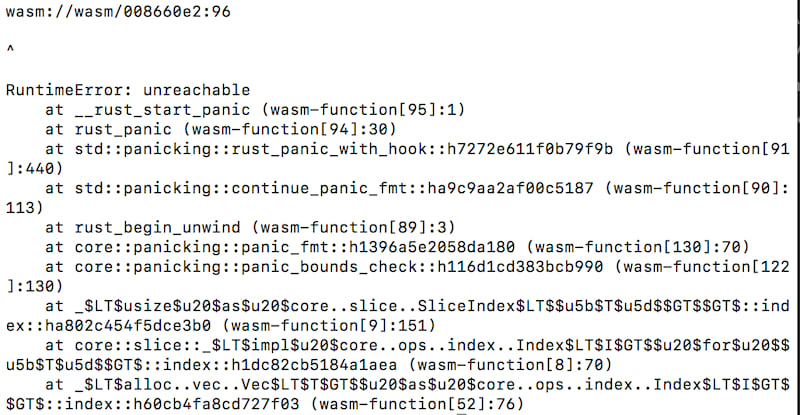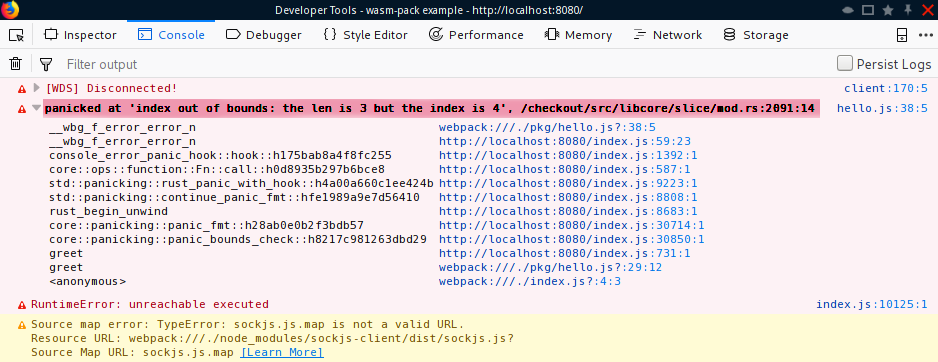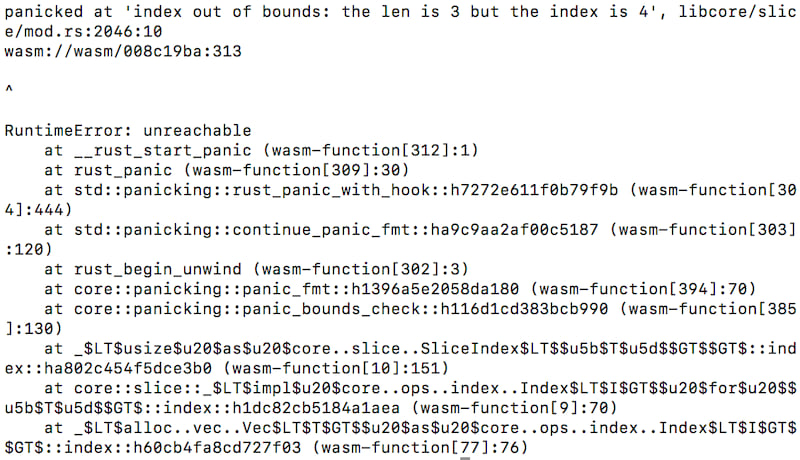8 releases
Uses old Rust 2015
| 0.1.7 | Oct 11, 2021 |
|---|---|
| 0.1.6 | Feb 15, 2019 |
| 0.1.5 | Sep 6, 2018 |
| 0.1.4 | Aug 14, 2018 |
| 0.1.1 | May 23, 2018 |
#14 in WebAssembly
1,375,861 downloads per month
Used in 4,156 crates
(558 directly)
510KB
console_error_panic_hook
This crate lets you debug panics on wasm32-unknown-unknown by providing a
panic hook that forwards panic messages to
console.error.
When an error is reported with console.error, browser devtools and node.js
will typically capture a stack trace and display it with the logged error
message.
Without console_error_panic_hook you just get something like RuntimeError: Unreachable executed
Browser:

Node:

With this panic hook installed you will see the panic message
Browser:

Node:

Usage
There are two ways to install this panic hook.
First, you can set the hook yourself by calling std::panic::set_hook in
some initialization function:
extern crate console_error_panic_hook;
use std::panic;
fn my_init_function() {
panic::set_hook(Box::new(console_error_panic_hook::hook));
// ...
}
Alternatively, use set_once on some common code path to ensure that
set_hook is called, but only the one time. Under the hood, this uses
std::sync::Once.
extern crate console_error_panic_hook;
struct MyBigThing;
impl MyBigThing {
pub fn new() -> MyBigThing {
console_error_panic_hook::set_once();
MyBigThing
}
}
Error.stackTraceLimit
Many browsers only capture the top 10 frames of a stack trace. In rust programs this is less likely to be enough. To see more frames, you can set the non-standard value Error.stackTraceLimit. For more information see the MDN Web Docs or v8 docs.
Dependencies
~0.6–1.3MB
~26K SLoC